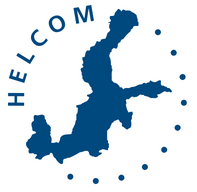(WMU press release)President Doumbia-Henry with the Workshop participants.-1″>The fourth, and final, Inter-regional Workshop on Risk Assessment Tools for Pollution Preparedness and Response under the was hosted by WMU in Malmö, Sweden on 30 October 2018. The workshop included 22 participants from nine countries, and built on the inter-regional discussions initiated by the previous OpenRisk Workshops in Finland, Portugal and Malta during 2017 – 2018.The EU funded Project on Open-Source Tools for Regional Risk Assessments to Improve European Preparedness and Response at Sea (OpenRisk, 2017-2018) is in the process of finalizing its work on drafting an optimized and open method toolbox for frequent regional pollution preparedness and response (PPR) risk assessments. While maritime risk assessments are vital to promoting risk-based decision-making in PPR, authorities have expressed an interest to improve current practices. Recent national and regional risk assessments have been successful but largely one-off projects, which typically do not allow for following how the risks of accidents and pollution develop over time and in space.New approaches enabling frequent risk assessments at a low cost are greatly needed to unleash the full potential of risk assessments within regional intergovernmental PPR organizations.The final OpenRisk Workshop focused on presenting the outcomes of the project and future plans within the scope of PPR risk management. This included a presentation of the document “OpenRisk Guideline for Regional Risk Management to Develop European Pollution Preparedness and Response at Sea” and the results of the Baltic Sea case study. In addition, possible follow-up projects were discussed.The OpenRisk Lead Partner is , an intergovernmental organization made up of the nine Baltic Sea coastal countries and the European Union. Founded in 1974 as the governing body of the Helsinki Convention, its aim is to protect the marine environment of the Baltic Sea from all sources of pollution, including spills from maritime accidents.Additional project partners are the (WMU), a non-profit maritime research institution based in the Netherlands, and the , which is the competent national oil spill response authority in Finland.The project is also supported by the BONN Agreement (North Sea), the Copenhagen Agreement (Nordic seas), REMPEC (Mediterranean), as well as the Norwegian Coastal Administration.
The fourth, and final, Inter-regional Workshop on Risk Assessment Tools for Pollution Preparedness and Response under the OpenRisk project was hosted by WMU in Malmö, Sweden on 30 October 2018.
